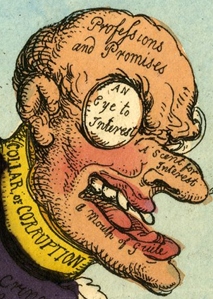All 1 entries tagged Good
View all 8 entries tagged Good on Warwick Blogs | View entries tagged Good at Technorati | There are no images tagged Good on this blog
October 01, 2021
The Value of History to Understanding Quality of Governance and Anti–Corruption
What can the historian offer those interested in the study of corruption? In this recently-published chapter I show how a historical approach can offer a productive and useful data set and tools to understand corruption and anti-corruption. Since corruption has existed across time and space, and is multi-faceted, involving politics, economics, law, administration, social and cultural attitudes, it can best be studied in a multi-disciplinary way that includes the study of the past as well as the present.
A historical approach offers ways of thinking about change and continuity, and hence also about how and why reform processes occur and are successful. Historical case studies can test and challenge social science models but also offer different, more qualitative, evidence that can help us to reconstruct the mentalities of those who refused to accept that their behaviour constituted ‘corruption’, as well as the motives of those bringing the prosecution or making allegations. Historical sources, often offering multiple perspectives of different participants, can also enable us to form a more holistic view of corruption scandals and of the important role of public discussion in shaping quality of government.
If history has so far been a little marginal to cross-disciplinary discussions about corruption and good government, the chapter seeks to make the cse that it might usefully be more included in analysis and policy discussions. The chapter contributes to a very wide-ranging volume, pulled together by the excellent team at Sweden's famed Quality of Governance Institute, that seeks to take a multi-disciplinary approach to the problems of good governance and anti-corruption. More details about the volume can be found here.

 Mark Knights
Mark Knights

 Please wait - comments are loading
Please wait - comments are loading

 Loading…
Loading…

